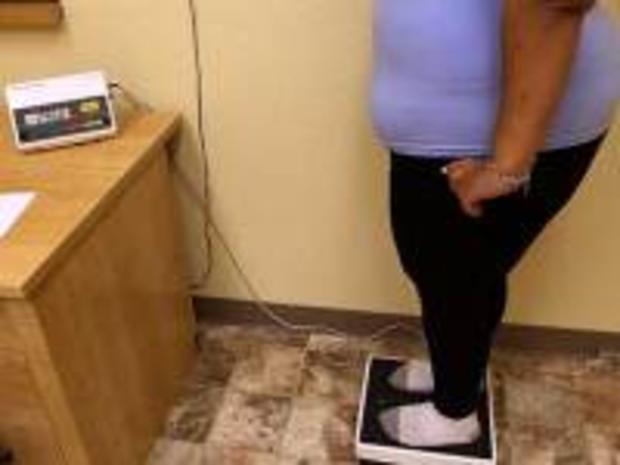Are You A 'Hipster?' Better Measure That Waistline As If Your Life Depends On It
(CBS4) -Let's say you're tipping the scales little bit more than you'd like. Isn't really that big a deal? Probably more than you think. Obesity now ranks the No. 1 cause of death in America; in fact, it is now even passed smoking in terms of the preventable causes of meeting an early grave in our country.
But there is one big thing to keep in mind when it comes to carrying around those extra pounds. A lot does depend on just where you do carry it. In plain terms, a spare tire around the middle is not the place to be over-inflated. The hips are the key.
Researchers reporting in the Annals of Internal Medicine say the evidence is stronger than ever before that a hefty belly is just plain deadly. In fact, people who carry extra weight around the middle have close to a 25 percent higher rate of early death compared to people who carry extra weight elsewhere in the body, particularly the hips.
When you come to the doctor's office, one thing we typically measure is something called BMI. That stands for Body Mass Index -- a rough math formula that calculates your height as compared to your weight noted to get an idea of just how much extra weight you are carrying. Anything above 25 is considered to be too heavy and a risk to your health.
But it turns out that the location of extra body fat is really the key -- that means measuring the size of your hips compared to the size of your abdomen.
Your hips are always supposed to be wider than your stomach. But if the measurements wind up coming close, or for that matter, the abdomen winding up being bulkier than the hips, well, that is definitely not a good thing. Your risk of heart disease, stroke, cancer, diabetes, among other things, really wind up shooting up.
Other words BMI is important ... but not as important as the waist-to-hip ratio.
If you're a woman, your ratio should be no greater than 0.85. If you're a male, your ratio should be no greater than 0.90.
If your numbers are higher you really need to get serious about losing that paunch.
To make the math simple, here are a few rough rounded out calculations as to the max:
Females
48 inch hips-41 inch waist
46 inch hips–39 inch waist
44 inch hips-37 inch waist
42 inch hips-36 inch waist
40 inch hips-34 inch waist
38 inch hips-32 inch waist
36 inch hips-31 inch waist
34 inch hips-29 inch waist
32 inch hips-27 inch waist
You get the idea.
Males
48 inch hips-43 inch waist
46 inch hips-41 inch waist
44 inch hips-39 inch waist
42 inch hips-38 inch waist
40 inch hips-36 inch waist
38 inch hips-34 inch waist
36 inch hips-32 inch waist
34 inch hips-31 inch waist
32 inch hips-29 inch waist
Keep in mind, however, that the best combination of measurements may be exactly that -- a combination. In other words, take a look at your BMI, and then calculate that hip to waist ratio. I think you can see where I am going with this. Just by simply looking at the ratio, you may think you are off the hook if you walk around with a 43 inch beltline ... as long as your hips are bigger. Not the case. There is large ... and maybe a little too large.
You know how those clothes are fitting, and you really need to look at it as if your life depends on it.
It does.
Dr. Dave Hnida is CBS4's Medical Editor. He blogs about the latest studies and trends in the health world. Read his latest blog entries, check out his bio or follow him on Twitter @drdavehnida




